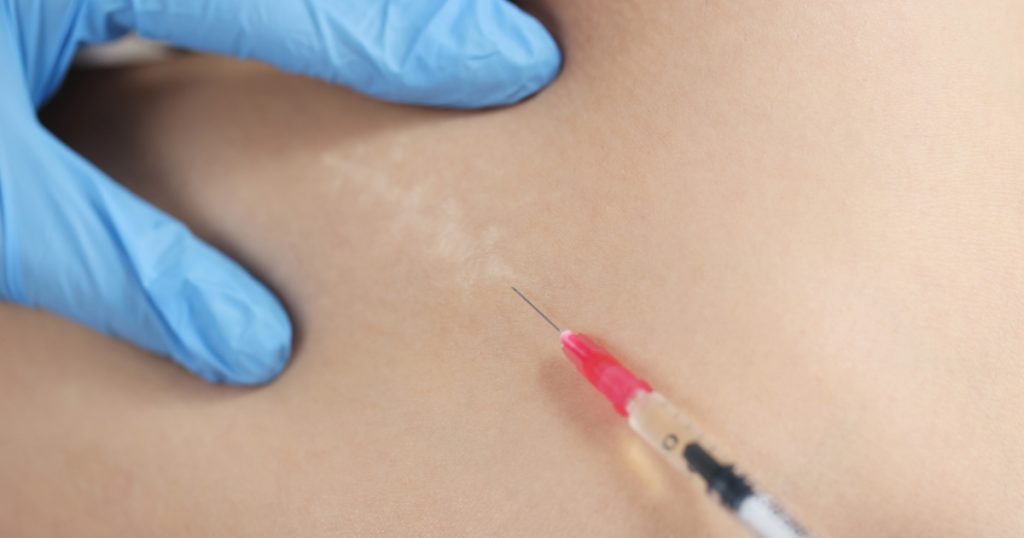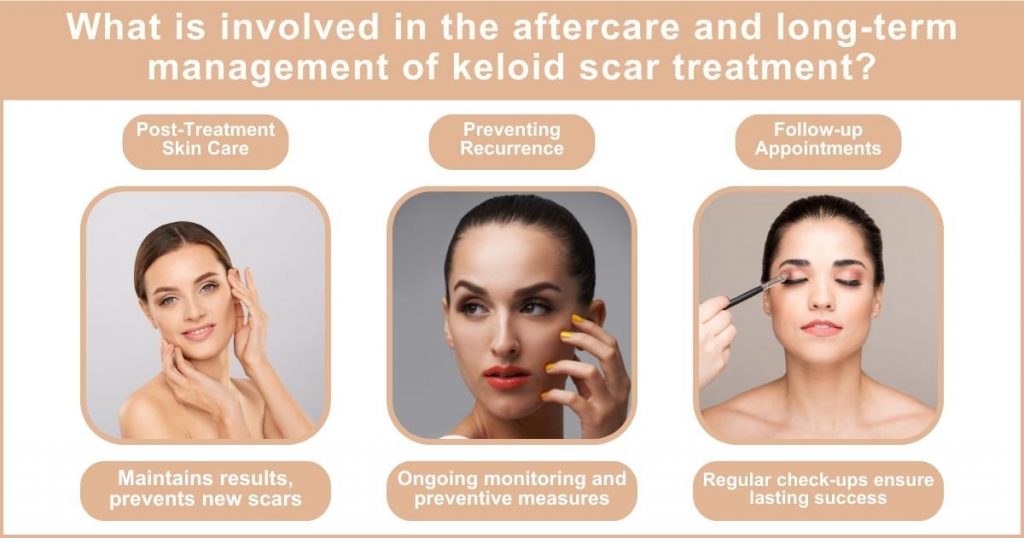In recent years, there has been a growing interest in the keloid scar tissue removal. These scars are raised and thickened, often considered unattractive and causing discomfort. Since keloid scars extend beyond the original wound, specialised treatments are necessary. This article will delve into different methods for removing keloid scar tissue, focusing on achieving smoother and healthier skin.
Prevention Strategies for Keloid Scarring
Preventing keloid scarring is crucial, especially for individuals who are more susceptible. By implementing early interventions and considering genetic factors, the formation of these scars can be minimized. Although complete prevention may not always be attainable, taking specific precautions significantly decreases the chances of keloid development.
| Strategy | Purpose |
| Minimise Scar Formation | Gentle wound care, protective dressings |
| Genetic Factors | Counselling if family history |
| Early Intervention | Prompt treatment to prevent keloids |
Non-Surgical Treatments for Keloid Scars

There are several non-surgical methods available to treat keloid scars , which can be preferred over surgery due to their lower risk and less invasive nature. These methods include injections, cryotherapy, and silicone gel sheets. It’s important to note that each non-surgical option has its advantages and disadvantages, so it’s advisable to seek medical guidance when considering these treatments.
| Treatment | Efficacy | Side Effects |
| Corticosteroid Injections | High | Possible skin thinning |
| Cryotherapy | Medium | Temporary pain, skin discolouration |
| Silicone Gel Sheets | Medium | Minimal |
Surgical Options for Keloid Scar Tissue Removal
In certain situations, surgical intervention might be the most effective treatment for removing keloid scars. Common methods include traditional surgical excision and laser surgery, although these approaches may have drawbacks, such as the possibility of recurrence. It is essential to consult with a specialist to determine the most suitable surgical approach for your specific case.
Book A Consultation With Dr Shehzadi Tasneem
Top-rated Plastic Surgeon For Scar revision in Dubai
Installment Plan Available
| Method | Pros | Cons |
| Excision | Complete removal | Risk of recurrence |
| Laser | Minimises scarring | Requires specialist |
See related: Keloid scar removal price in Dubai
Radiation Therapy in Keloid Treatment
Radiation therapy is often used as a supplementary treatment alongside surgical removal for keloids. It utilises different types of radiation to reduce the chances of recurrence post-surgery. While this therapy can be effective, it should be approached with caution due to potential risks and side effects.
| Type | Application | Risks |
| Electron Beam | Post-surgical prevention | Skin discolouration |
| X-rays | Targeted treatment | Potential long-term effects |
Laser Treatments for Smoother Skin
Laser treatments have gained popularity in achieving smoother skin and can effectively remove keloid scars . Different lasers can be used, each with its specific effects and benefits. It is important to carefully choose a qualified practitioner and follow proper aftercare for successful outcomes when undergoing laser procedures.
- Types of Lasers Used: Different lasers are suited for different skin types and scar characteristics.
- Procedure and Effectiveness : Treatment plans are customised, and multiple sessions may be required.
- Skin Resurfacing Techniques : Lasers can remove keloids and improve skin texture.
Combination Therapies for Comprehensive Treatment
To effectively treat keloid scars, combination therapies utilise a variety of treatment approaches simultaneously. These therapies may involve surgical and non-surgical methods, providing a comprehensive and personalised approach. Collaborating with a multidisciplinary care team ensures that all aspects of the patient’s condition are properly addressed.
- Combining Surgical and Non-Surgical Approaches : A hybrid approach may yield the best results.
- Customised Treatment Plans : Personalized plans consider the individual’s specific needs and goals.
- Multidisciplinary Care Team Collaboration : Collaboration among various specialists ensures holistic care.
Impact on Mental and Emotional Well-being
Keloid scars can have a profound impact on a person’s mental and emotional well-being, extending beyond just physical appearance. It is not uncommon for individuals to experience feelings of self-consciousness, anxiety, or depression as a result. Seeking support and counselling can be crucial in promoting physical and emotional healing.
- Psychological Effects of Keloid Scars : These scars can lower self-esteem and body image issues.
- Support and Counseling : Emotional support and therapy can aid in mental recovery.
- Patient Testimonials and Case Studies : Hearing from others who have successfully treated keloids can be encouraging.
Home Remedies and Over-the-Counter Solutions

If you’re looking for less intensive treatments, there are some home remedies and over-the-counter products that may help provide relief. While they may not be as effective as medical treatments, they can be a viable option for more minor or less severe keloids. Following guidelines and recognising when professional medical treatment is necessary is important.
- Home Treatment Options : Items like tea tree oil and aloe vera have been reported to help.
- Effectiveness of Over-the-Counter Products : Some creams and ointments are formulated specifically for keloids.
- Precautions and Considerations : Over-the-counter solutions may not be suitable for all types of keloids.
Technological Innovations in Keloid Scar Treatment
Technology advances are continually transforming the field of keloid scar treatment. Innovations like artificial intelligence and robotics are emerging, offering improved effectiveness and precision. It is crucial for practitioners and patients seeking the latest in care to stay informed about these advances.
- Recent Advances and Breakthroughs: Technology constantly evolves, creating new treatment possibilities.
- Role of Artificial Intelligence and Robotics : AI and robotics can enhance precision and outcomes.
- Future Prospects : Ongoing research promises even more effective and less invasive treatments.
Aftercare and Long-term Management

Continuing care is essential for maintaining the results of keloid scar treatment and preventing future occurrences. This includes adhering to post-treatment skincare routines, attending follow-up appointments, and checking for any signs of new keloid formation. Achieving long-term success requires a dedication to consistent care and staying vigilant.
- Post-Treatment Skin Care : Proper skin care after treatment helps maintain results and prevent new scars.
- Preventing Recurrence: Continuous monitoring and preventive measures are essential.
- Follow-up Appointments and Ongoing Monitoring: Regular check-ups with healthcare providers ensure lasting success.
Removing keloid scar tissue may seem like a challenging journey, but with advances in medical technology, it’s now more achievable than ever. By understanding how keloid scars form and exploring both non-surgical and surgical options, many people can successfully remove their keloid scars. Working closely with healthcare professionals and considering all available treatments allows individuals to make informed decisions that ultimately result in smoother, scar-free skin. Whether your keloids are a result of surgery, injury, or minor skin damage, the information provided here serves as a comprehensive guide to keloid scar tissue removal. Discover advanced solutions for Keloid Scar Revision in Dubai , tailored to your unique needs, with our specialized cosmetic procedures.
Dr Shehzadi Tasneem Sultan is renowned for her exceptional skills in plastic surgery, specialising in keloid scar tissue removal and more. With esteemed degrees from Allama Iqbal Medical College and fellowships from the UK, she’s committed to innovative techniques and patient-centred care. Book a free consultation today to explore personalised treatment options with this distinguished expert. Tummy Tuck Scar Revision is a procedure that helps improve the appearance of scars left after a tummy tuck surgery, making them less noticeable and smoother. It is like giving a makeover to the scars on your tummy to make them look better.
Face Scar Revision is a procedure that helps to improve the appearance of scars on the face, making them less noticeable and helping people feel more confident about their skin.












